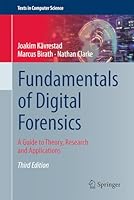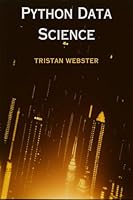
Computer Graphics Through OpenGL: From Theory to Experiments, 2nd Edition
- Length: 951 pages
- Edition: 2
- Language: English
- Publisher: A K Peters/CRC Press
- Publication Date: 2014-08-06
- ISBN-10: 1482258390
- ISBN-13: 9781482258394
- Sales Rank: #724165 (See Top 100 Books)
From geometric primitives to animation to 3D modeling to lighting, shading, and texturing, Computer Graphics Through OpenGL®: From Theory to Experiments, Second Edition presents a comprehensive introduction to computer graphics that uses an active learning style to teach key concepts. Equally emphasizing theory and practice, the book provides an understanding not only of the principles of 3D computer graphics, but also the use of the OpenGL® Application Programming Interface (API) to code 3D scenes and animation, including games and movies.
The undergraduate core of the book is a one-semester sequence taking the student from zero knowledge of computer graphics to a mastery of the fundamental concepts with the ability to code applications using fourth-generation OpenGL. The remaining chapters explore more advanced topics, including the structure of curves and surfaces and the application of projective spaces and transformations.
New to the Second Edition
- 30 more programs, 50 more experiments, and 50 more exercises
- Two new chapters on OpenGL 4.3 shaders and the programmable pipeline
- Coverage of:
- Vertex buffer and array objects
- Occlusion culling and queries and conditional rendering
- Texture matrices
- Multitexturing and texture combining
- Multisampling
- Point sprites
- Image and pixel manipulation
- Pixel buffer objects
- Shadow mapping
Web Resource
The book’s website at www.sumantaguha.com provides program source code that runs on various platforms. It includes a guide to installing OpenGL and executing the programs, special software to help run the experiments, and figures from the book. The site also contains an instructor’s manual with solutions to 100 problems (for qualifying instructors only).
Table of Contents
Part I – Hello World
CHAPTER 1 – An Invitation to Computer Graphics
CHAPTER 2 – On to OpenGL and 3D Computer Graphics
Part II – Tricks of the Trade
CHAPTER 3 – An OpenGL Toolbox
Part III – Movers and Shapers
CHAPTER 4 – Transformation, Animation and Viewing
CHAPTER 5 – Inside Animation: The Theory of Transformations
CHAPTER 6 – Advanced Animation Techniques
Part IV – Geometry for the Home Office
CHAPTER 7 – Convexity and Interpolation
CHAPTER 8 – Triangulation
CHAPTER 9 – Orientation
Part V – Making Things Up
CHAPTER 10 – Modeling in 3D Space
Part VI – Lights, Camera, Equation
CHAPTER 11 – Color and Light
CHAPTER 12 – Texture
CHAPTER 13 – Special Visual Techniques
Part VII – Pixels, Pixels, Everywhere
CHAPTER 14 – Raster Algorithms
Part VIII – Anatomy of Curves and Surfaces
CHAPTER 15 – Bézier
CHAPTER 16 – B-Spline
CHAPTER 17 – Hermite
Part IX – Well Projected
CHAPTER 18 – Applications of Projective Spaces
Part X – The Time is Pipe
CHAPTER 19 – Fixed-Functionality Pipelines
Part XI – Rendering Pipe Dreams
CHAPTER 20 – OpenGL 4.3, Shaders and the Programmable Pipeline: Liftoff
CHAPTER 21 – OpenGL 4.3, Shaders and the Programmable Pipeline: Escape Velocity
APPENDIX A – Projective Spaces and Transformations
APPENDIX B – Math Self-Test
APPENDIX C – Math Self-Test Solutions







